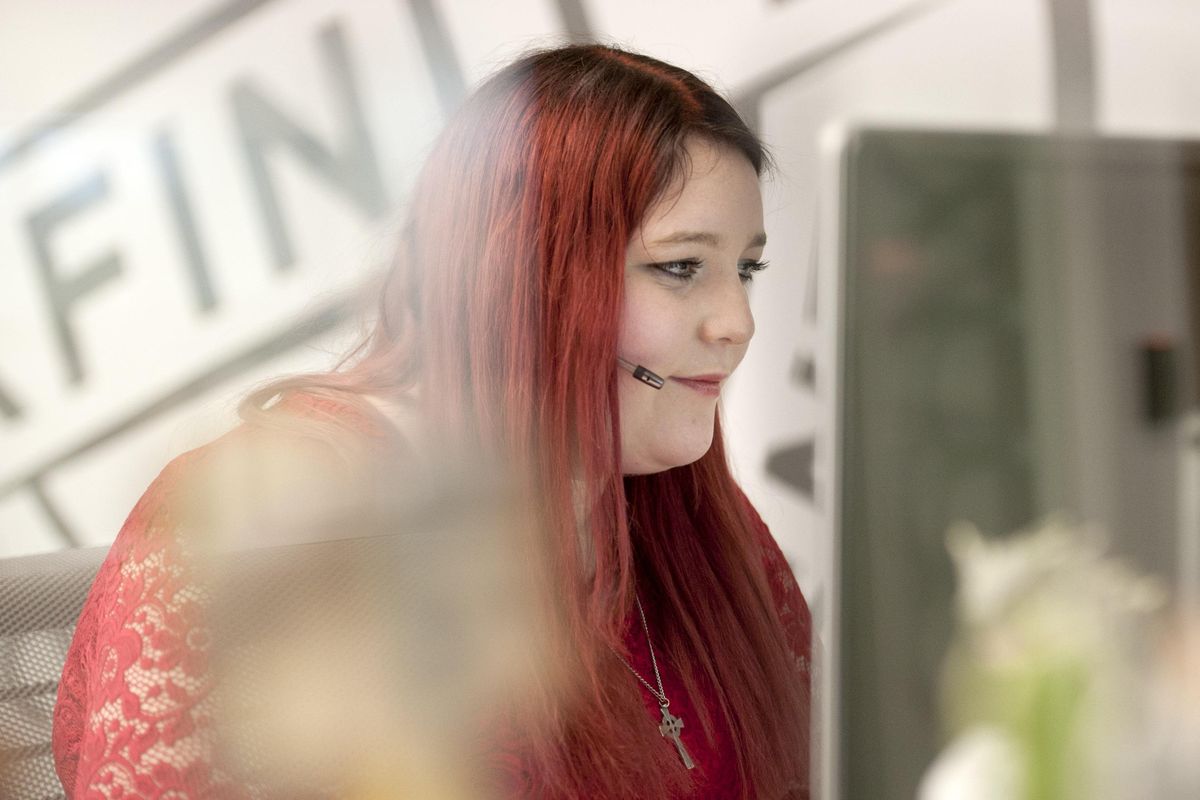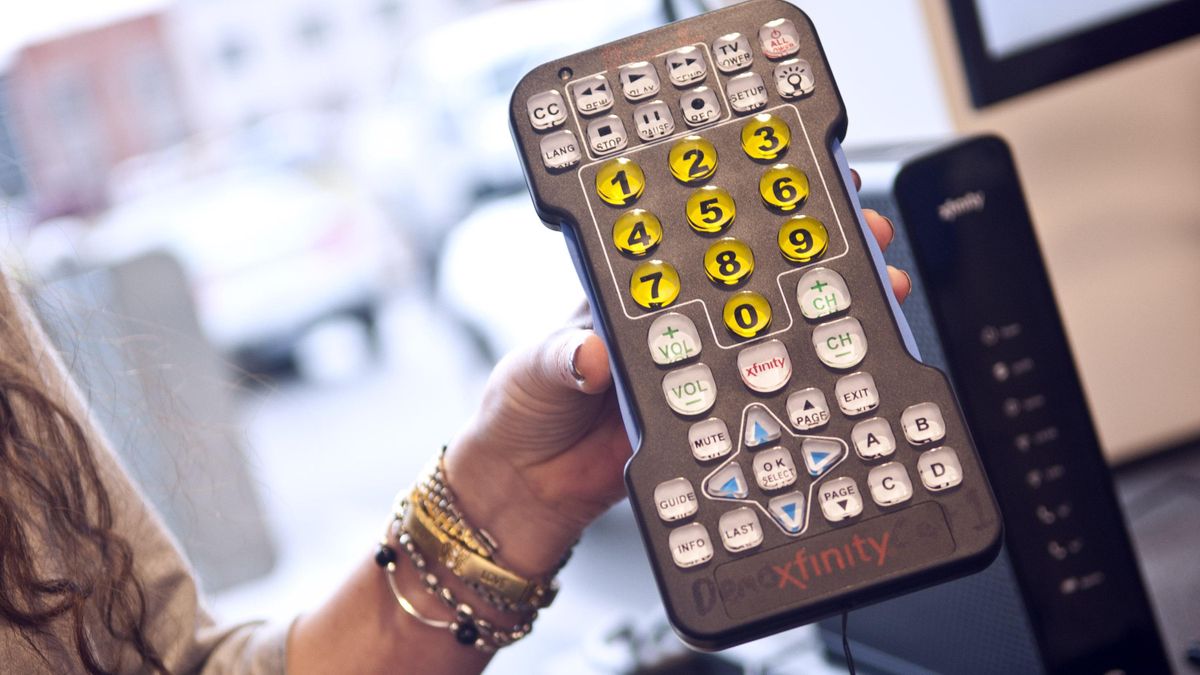Comcast aims to help customers with disabilities through call center, technology
Christine Bowles, an agent at Comcast’s Accessibility Center of Excellence in Liberty Lake, talks with a customer on Wednesday, Jan. 9, 2019. She works in the unit that specializes in taking calls from elderly customers and people with speech impairment who use keyboards to communicate. (Kathy Plonka / The Spokesman-Review)Buy a print of this photo
While some Comcast call center agents focus on sales calls or assisting customers with billing issues, others dedicate themselves solely to helping customers with disabilities navigate technology.
At the Comcast Accessibility Center of Excellence in Liberty Lake – the company’s largest accessibility support center in the country – a team of specially trained agents are helping elderly as well as physically and visually impaired customers use the company’s X1 television platform and troubleshoot connectivity issues.
“The nice part about our department is we can take the time to get them through any issues,” said Michele Gifford, operations manager for the Accessibility Center of Excellence, or ACOE. “When they come in to us, they stay with us and we’re able to resolve all of their issues.”
Comcast opened its 80,000-square-foot Center of Excellence in 2016 at 24081 E. Mission Ave., which houses the ACOE as well as digital care, mobile, retention and retail affiliate teams. The center employs more than 600 people.
The telecommunications giant launched the ACOE in 2013 with 12 agents and has since expanded to more than 70 agents, who handle 30,000 customer calls a month. Agents undergo 10 weeks of product training and extensive soft-skill training on how to interact with customers with disabilities, Gifford said.
The ACOE has a dedicated phone line – separate from Comcast’s main customer service number – that connects customers directly to the center. The special focus hasn’t gone unnoticed.
“The ACOE is great. It really helps when you have a problem with your television to have people really troubleshoot with you,” said Eric Bridges, executive director for the American Council of the Blind. “Cable costs a lot. I’m paying for accessibility right now and I like it.”
The ACOE works hand in hand with the Comcast Accessibility and Product Development Lab at the company’s headquarters in Philadelphia, which was established in 2012 by Tom Wlodkowski, the vice president of accessibility for Comcast.
The lab allows developers to collaborate and create products and features that can be integrated into Comcast’s platforms. It hosts focus groups that include people with disabilities who test products and provide feedback.
Wlodkowski has made it a priority to enhance usability of the company’s products and services, especially for people with disabilities.
“He is very conscious of where can we take our technology, and I think truly we all feel like we’ve just begun to tap into what we can do,” Gifford said. “I think it’s really endless on where we are going to take our technology.”
The X1 platform – developed by Comcast – includes the industry’s first voice-enabled television user interface, which features a talking guide that reads program titles, network names, time slots and DVR settings. There’s also a video description feature that narrates visual elements of television shows – much like an audiobook.
A voice-enabled remote is included with the X1 television service, allowing customers to navigate channels, search for shows and switch on closed-captioning by voice.
“When we launched our X1 platform, we were very conscious to make sure that we have a robust accessibility menu within it, so we can make it really easy for our customers that need closed-captioning or video descriptions,” Gifford said. “We really had our visually impaired customers at the top of our minds when we were launching our new technology for the X1 platform.”
A survey of 626 adults conducted by Global Strategy Group on behalf of Comcast and the American Foundation for the Blind found 96 percent of visually impaired adults watch television on a regular basis.
CenturyLink, DirecTV and Dish Network all integrate audio navigation into their television top boxes for visually impaired customers. Dish Network also has a Bluetooth audio feature that allows users to sync hearing aids via a wireless transmitter to their receiver to improve their listening experience.
Bridges said the American Council of the Blind worked closely with Comcast to introduce technology, such as the X1 remote and talking guide.
Comcast attends the organization’s national convention each year and was innovative in building technology that meets the needs for the most people, he said.
“The X1 voice remote is something that everybody can use, but even before the remote came out, the text-to-speech engine allowed a blind person to navigate the remote and TV,” he said. “It allowed you – for the first time as a blind person – to take full advantage of those services or features that frankly you’ve been paying for the whole time.”
Comcast’s X1 voice remote could make television more accessible to a lot of people, including the elderly, said Bill Kane, director of the Spokane Center for Independent Living in Spokane Valley.
“I think it’s a great idea. It could increase independence and give people the opportunity to do things on their own who now may be asking someone else to help change the channel,” he said. “With voice control, we will be able to do it independently.”

